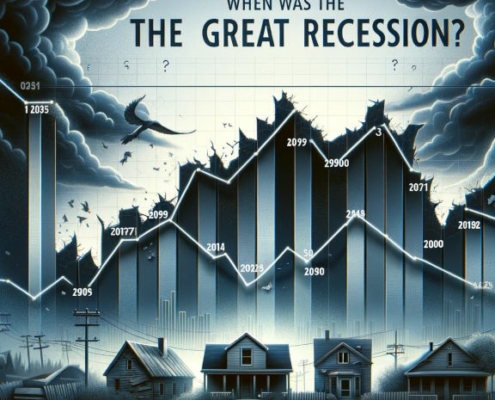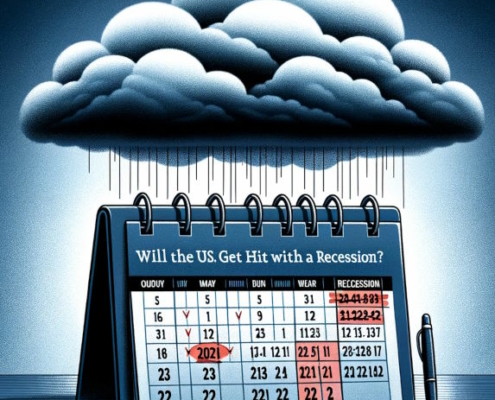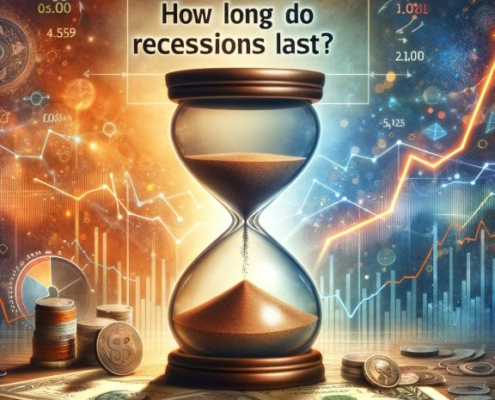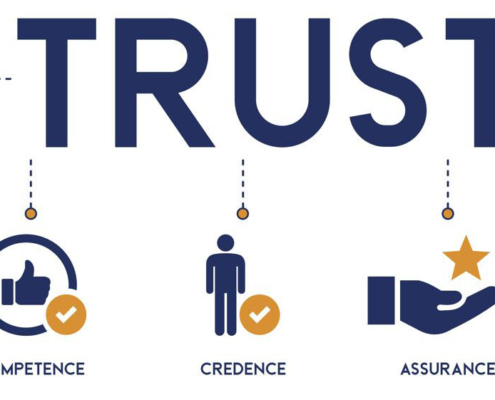How To Start Drive-Thru Coffee Stand
Learn steps to start a drive-thru coffee stand begins with a concept or theme on what the coffee kiosk will look like to the public. Then, you must draft a business plan on how the drive through coffee stand will succeed.
By Brad Nakase, Attorney
Email | Call (888) 600-8654
A drive-through coffee stand is a hip spot where you can grab your daily cup of joe without even getting out of your car. Basically, you drive-thru to a coffee kiosk window or speaker, place your order, and then pick up your drink at the next window. It is a perfect option for those who are always on the go, running late, or simply too lazy to get out of their cars.
If you are thinking of starting a coffee shop business, a drive-through coffee shop could be a smart choice for a startup because it requires less space and fewer staff members compared to a traditional coffee shop. You can set up shop in a small location, and customers can easily swing by, grab their coffee, and be on their way. Plus, since most people love coffee and convenience, you can attract a lot of regular customers who are always in a rush but still want their caffeine fix.
In this article, our business startup attorney discusses how to start a drive-thru coffee stand as follows:
Why should I start my own drive-through kiosk business?
A drive-thru coffee shop can be a successful business model for a number of reasons. One of the main factors is demand – many people today are busy and always on-the-go, which means they value convenience. A drive-through coffee kiosk can offer a quick and easy way for people to get their coffee fix without having to leave their car or take much time out of their busy schedules.
In terms of costs, a drive-through coffee shop can be a more affordable option compared to a traditional brick-and-mortar coffee shop. This is because the overhead costs are lower – for example, there is no need for a large seating area or a lot of space for customers to linger. Additionally, the staffing requirements may be lower since the focus is on quick service and not on creating a sit-down experience. These lower costs can lead to higher profits.
Speaking of profits, a successful drive-thru coffee shop can be quite profitable. By serving a high volume of customers quickly and efficiently, the business can generate a steady stream of revenue throughout the day. Additionally, a drive-through coffee kiosk can be more versatile than a traditional coffee shop – it can potentially operate 24/7, and can be located in a variety of settings (such as a strip mall or a standalone building). All of these factors can contribute to a successful business that generates high profits.
Strategic issues of drive-through coffee shop
Like any business, drive-through coffee shops can fail for a variety of reasons. One of the most common reasons is a lack of proper business planning. Business planning is important because it helps to identify potential risks, develop strategies to mitigate those risks, and ensure that the business is well-positioned to achieve its goals.
Some drive-through coffee stand may fail due to a lack of local market research. It is important to understand the local market and competition before opening a new drive-through coffee shop. If there are already established coffee stand in the area, it may be more difficult to attract customers to a new business. Conducting market research can help to identify potential gaps in the market, as well as the target demographic of the business.
Another potential issue is a lack of proper financing. Starting a drive-thru coffee stand requires capital, and if a drive-through coffee shop does not have enough funds to cover initial costs, it may struggle to get off the ground. It is important to have a solid business plan for the drive-through coffee stand that includes financial projections, as well as access to funding sources such as loans or investors.
In addition, a drive-through coffee shop may fail if it does not have the right equipment or staffing in place. It is important to have the necessary equipment to efficiently process orders and deliver quality products to customers.
Steps For Starting A Drive-Through Coffee Business
-
Determine a concept for the drive-thru coffee stand
Before getting started, think about what you want the coffee stand to look like, and what kind of experience customers should have.
When brainstorming concepts for a drive-through coffee kiosk, there are many different directions an entrepreneur could go in. Some popular concepts include offering specialty coffee blends, focusing on healthy options, being socially responsible, emphasizing convenience, and leveraging technology.
For example, a specialty coffee concept could focus on providing high-quality, unique coffee blends that are not commonly found in other coffee shops. This could include seasonal drinks, organic and fair-trade options, and other premium offerings. Alternatively, a healthy options concept could cater to customers who prioritize healthy eating by offering low-sugar and low-fat options, as well as non-dairy milk alternatives and protein shakes.
A socially responsible concept could appeal to customers who are concerned about the environment and ethical sourcing by using eco-friendly cups and packaging, sourcing coffee from local and fair-trade suppliers, and donating a portion of profits to a charitable cause. A convenience concept, on the other hand, could be geared towards busy professionals and those on the go by providing a streamlined ordering process and quick service, as well as mobile ordering and grab-and-go breakfast items.
-
Write a business plan
If an entrepreneur wants their new drive-through coffee stand concept to succeed, they need to develop a well-crafted business plan. By forming a plan at the start, a business owner can save money from the get-go and avoid making costly mistakes. Also, a business plan for the drive thru coffee stand can help streamline spending and other efforts.
A drive through coffee stand menu is responsible for determining an entrepreneur’s decisions regarding space, workflow, coffee equipment, and number of baristas to hire.
Prior to selecting a location and a menu for a drive-through coffee kiosk, an entrepreneur will need to think about their potential future customers. Who are they? What will they want to buy? Obviously, coffee kiosk should be the number one product, but plenty of coffee shops have sophisticated offerings that go beyond that morning cup of joe. In the end, a menu will depend on the shop’s location and the target customer’s needs.
Also, a coffee menu could have an effect on the permit requirements needed to operate the shop. For instance, while frying fresh donuts every morning sounds like a popular (and delicious) idea, it will have an impact on the permitting and building code process.
Due to possible permitting and space limitations, an entrepreneur will likely not be able to make their own croissants or fry their own eggs. For instance, if a coffee kiosk owner wants to offer grilled sandwiches and soup, there may not be the space to allow for preparation and cooking. Also, drive-through space limitations may force an owner to acquire their products from an off-site provider and prepare them at one’s commercial commissary.
It is important to provide a simple menu that caters to customer demand. For instance, it may be a good idea to offer the following items:
- Espresso-based drinks (Americanos, lattes, and shots)
- Drip coffee
- Cold-brew coffee
- Energy drinks
- Teas
- Soda and water
- Non-caffeinated drinks
- Prepackaged food (cookies, muffins, bagels, brownies, etc.)
After an entrepreneur figures out who his or her ideal customers are, they can expand their menu options. At present, popular drive-through coffee kiosk menu items include scones, muffins, and cookies. These pair delightfully with a hot espresso or iced coffee. Other popular menu items include energy drink-based beverages and smoothies. To make these popular drinks, a business owner should be sure to factor ice machines and commercial blenders into equipment expenses. A menu can be developed to attract both afternoon and evening customers, perhaps by offering nitro coffee and cold brew for those with early morning or late-night shifts, and ice cream for hot afternoons.
When thinking of ideas for one’s menu, it is a good idea to write everything down. County health departments sometimes request the full menu and ingredients before issuing a permit to the business owner. If the coffee shop sells certain items like ice cream, soft cheese, and fried goods, the health department may identify the business differently than if it was only offering coffee or smoothies. This categorization may have separate or additional requirements to fulfill.
A unique menu is one way to stand out from all the other drive-through coffee shops. If a business is known to offer the excellent coffee and food that customers want, this already sets the business ahead of competitors who skimp on offerings.
To come up with a unique, competitive menu, one should ask themselves the following questions:
- What will the business have that other coffee shops will not?
- What will customers get excited about?
- Are the menu options going to inspire customers to come back?
- Are there vendors available to provide the needed products and ingredients?
It is important to remember that the menu is a major part of the business planning process. If one is stuck in the brainstorming phase, it can help to visit other coffee shops and drive-through stands in one’s area. What are these businesses serving? What could you do better?
-
Find the perfect location
It is a good idea to start looking for the perfect spot early on in the process. Location is a critical factor in the success of a drive-through coffee shop. Finding the right location depends on the following:
- Thriving traffic
- Accessibility
- Monthly costs
- Healthy customer base
- Existing competition
- Zoning requirements
Along with vehicle and foot traffic, an entrepreneur will want to consider factors such as labor laws, competition, zoning requirements, and taxes.
The daily pattern of traffic, with its ebbs and flows, will also have an impact on picking the right location. It is important to remember that accessibility and convenience is the main selling point to potential customers. The point of a drive-through stand is getting in and out as quickly as possible. An entrepreneur should think about how their customers will enter the shop and leave. Is this a straightforward, snappy process?
If the customer can easily get into the drive-through entrance but has difficulty leaving because of a confusing flaw in design or heavy traffic, they will be less likely to return, no matter how good that croissant was. Customer convenience and safety are also tied. You don’t want your customer careening across two lanes of oncoming traffic in a desperate bid to get their breakfast every morning. Also think about the potential for build-up. Can your drive-through lane accommodate four or five cars, or is a line going to snake around the block and create congestion?
Most people go to drive-through coffee stand to grab a quick drink and a snack after commuting to work, school, or running errands. In general, people are in a rush, so they value convenience and speed. If it takes twenty minutes to brew a cup of coffee, they’re going to look elsewhere.
It is also important to think about the potential for walk-in customers at your drive through coffee stand. Anywhere from ten to thirty percent of customers will drop by on foot. For this reason, you should make sure that these customers have a safe place to order, wait, and maybe even sit down to enjoy their coffee. This could mean designing a barrier where pedestrians can stand and wait for their order.
Some common locations for drive-throughs include:
- Gas stations
- Empty parking lots
- Empty commercial lots
If an entrepreneur is interested in setting up their drive thru coffee kiosk at a certain location, they should contact the property manager. To do so, one may inquire with nearby businesses at the site. They usually will be able to provide the name and number of the person managing the site. Prior to contacting them, an individual should take into account local zoning rules to make sure they are compatible with one’s plans. It is also wise to consider the many layers of government agencies that may get involved. Cities, counties, and states all may have some influence on a drive-through coffee stand.
The business development office in any given city may be able to identify specific agencies for relevant matters. Looking up this information early in the game is a critical way of avoiding wasted time and headaches down the road.
As discussed, choosing the perfect location for a coffee kiosk involves knowing the market base and the ideal customer, analyzing the competition, and reviewing the local area’s taxes, laws, permitting requirements, and regulations. All of these factors should have a role in deciding what place will be the ultimate location for one’s coffee business.
The perfect location for a drive-through coffee shop will be the sweet spot between one’s target market, competitors, leasing terms, and zoning laws. For instance, the competitors of a drive-through coffee shop could be fast food restaurants, a local coffee bar, a gas station, or other drive-through stands.
Depending on the particular municipality, it may be necessary to offer parking and some physical space for cars to be able to turn around. Accessibility points and special marking may also be required for those with disabilities. Also, it may be necessary to have restroom access for employee within a certain distance. All of these points require research. If any issue involves city streets, it may be wise to check with the city’s transportation department.
One should note that premium locations will be more expensive due to ideal parking, traffic conditions, visibility, availability of electrical outlets, access to water, a commissary, and restrooms.
-
Assessing competition
When starting a drive-through coffee stand, analyzing the competition is an important step. One should drive around or perform a Yelp or Google search to discover other similar businesses in the local area. These may include places like Denny’s, IHOP, and McDonald’s. Think about what these coffee businesses are selling and what one can add to their own menu to differentiate it.
Also, study how local customers behave at certain times of the day. For instance, a coffee shop may serve a completely different crows than those who show up for breakfast or brunch. Also, some customers may simply be looking for the cheapest available option. However, customers are also looking for good customer service, convenience, and quality menu options.
It would be best to study competition within a two0mile radius of one’s ideal location. Competition may include:
- Fast food restaurants
- Corporate coffee chains
- Independent coffee shops
- Gas stations and retail
Some questions to ask regarding competition include:
- What are they doing right?
- What are they doing wrong?
- Where are their customers coming from?
- How can you do better?
- How can you set yourself apart?
Identifying competition is a key element in making one’s own drive-through coffee stand a success. Therefore, get a head start studying your competition. Go to their drive through coffee kiosks. Talk to the owners. It may also be possible to get some information about the area from the local government or community. Other coffee kiosk is not necessarily an enemy. The two or three or four of you make up a healthy market. A healthy market means money for those who know how to work their advantage.
-
Getting a structure
At this point one should decide whether they are going to rent, build, or buy a drive-through coffee shop structure. Each of these options will have an impact on the startup budget, access to available contractors and supplies, and time constraints.
Building a drive-through coffee stand structure is feasible and may also be the most cost-effective option. However, this depends on surrounding circumstances. For instance, an entrepreneur will require access to the equipment, tools, and space for the construction. Also, one will need to ensure that the building follows the local building department code. Building code requirements make sure that a structure is safe to operate. If one is unsure how to begin, he or she can contact the state’s building department for the relevant construction requirements prior to breaking ground. It will also be necessary to hire a licensed contractor to install the plumbing and wiring needed for commercial use.
Though building a shop from scratch is economically feasible, it will also take time. One option is to buy a food truck or RV trailer to work out of until the shop has been constructed.
Another option is to buy an existing drive-through coffee kiosk structure. This can certainly speed up the process of going into business. Websites like Craigslist may show coffee shops for sale. There are also manufacturers who can sell you a stock drive-through structure.
Renting a drive-through shop is another cost-effective method. With this option, one may have to rent at a specific location or move to their choice location. A rental may require certain upgrades, including electrical wiring, plumbing, lighting, and installation.
It would be wise to check local regulations about building, renting, and buying. Every aspect of construction will need to be approved, including the width of doorways, the number of sinks, the ventilation system, and the wire gauge installed.
-
Find vendors and partners
After figuring out what to serve on your menu, the next step will be to find the appropriate vending partners. For instance, if you plan to serve bagels, you will need to find someone who can provide a regular fresh supply of bagels. Unless you plan on making the food yourself, every item will need a wholesale source.
It is a good idea to think about the following vendor questions:
- Where will you get your baked goods from?
- Where will you get your coffee from?
- Where will you get your cups, lids, and napkins from?
It is worthwhile creating a professional relationship with partners and vendors. Choosing a wholesale coffee roaster is a major decision for a drive-through coffee shop. It will take time visiting coffee roasters and deciding what blends are best for the business.
In addition to coffee, labor, and rent, supplies are one of the biggest expenses. For this reason, it may be a good idea to shop at a local COSTCO or restaurant supply business. When an entrepreneur gets their reseller’s license, they can buy their inventory without having to pay sales tax.
-
Select equipment
A drive-through coffee shop cannot operate without the right equipment. It is important to plan and budget for coffee equipment purchases early on in the process. By doing so, an entrepreneur may feel confident that they are getting the right equipment for a good price.
There are a few major kinds of equipment that are necessary for a drive through coffee stand. These include:
- coffee grinders
- espresso machine
- blenders
- ice machine
- refrigerator
The espresso machine is by far the most important purchase. To select the appropriate espresso machine, one needs to estimate speed space and capacity to handle rush hours. Espresso machines are available in one-group to four-group heads. A one-group espresso machine takes up less space and uses less power. However, it only serves 50% of the volume of a two-group espresso machine. If an individual decides to purchase a four-group machine, he or she will need to think about the size as well as the practicality of several baristas working together to serve espresso shots.
If an entrepreneur thinks that they will have a busy drive through coffee kiosk, he or she should think about getting two two-group espresso machines that baristas will feel comfortable using. An espresso machine can be an expensive purchase, especially when considering the brand and number of groups. An entrepreneur will want to keep their budget in mind, and it is recommended to purchase a machine that can be easily repaired. It should be remembered that an espresso machine will need maintenance sometimes. Before buying an espresso machine, think about how easy it is to acquire spare parts. If a business owner cannot find the right parts, he or she may need to purchase a new machine.
While the espresso machine may be the biggest investment, other coffee equipment is just as important. For instance, it is a good idea to invest in commercial-grade coffee grinders to produce a high-quality espresso shot. Typically, drive through coffee shops have a minimum of two coffee grinders: one grinder for decaf coffee beans and one grinder for the espresso blend. You want to select a reliable grinder that is not too loud, takes up little room, and that has a strong motor.
Also, an owner should be sure to buy a water heater, a water filter system, a refrigerator, a blender, scales, and an ice maker.
-
Local laws and health requirements
One of the critical factors in getting a drive through coffee shop to be successful is knowing local business requirements and regulations. Being aware of these requirements can save an entrepreneur a lot of money in errors, fees, and reapplication costs. Do not hesitate to contact various departments such as the buildings department, health department, and even the fire marshals office. Municipal codes are sometimes compartmentalized within these general departments.
Because an entrepreneur will be making plenty of phone calls, it is a good idea to start early and maintain a list of who it is necessary to call.
If an individual is operating their own freestanding drive through coffee shop, they will need to have restroom facilities and a commissary that meet local building and health requirements. While every city is different working with these agencies is largely the same: be organized, maintain focus, and always follow up.
It is a good idea to speak with local health department officials to learn more about requirements and regulations. Do not be afraid to ask for help. After all, these agencies are here to help businesses succeed.
-
Signing a lease
An entrepreneur will have to rent land to establish their drive through coffee kiosk unless they have a property zoned for such a business. This land lease allows an entrepreneur to run their drive through business in a particular location. Elise may also permit the owner to have access to certain amenities such as power, water, sewage, parking spaces, exterior lighting, and restroom access. It is possible that some properties may permit an owner to access the land but may not permit access to nearby restrooms or the use of any utility company. To have access to electricity, an entrepreneur may need to install the necessary infrastructure to connect utilities.
Prior to signing a lease for a drive through coffee kiosk an entrepreneur should consider the following:
- property zoning
- ability to connect to the power supply
- access to the city’s water lines
- signage options
- close to restrooms
If an owner does not have access to power and water, he or she may still run their business in the same capacity as a mobile coffee unit or a coffee truck. He or she may have to supply their own water and power through the use of a gray water tank and freshwater containers. A fuel powered generator can generate the necessary power. It’s important to know one’s ability to set up billboards, signs, and any other markers on the property one is leasing. These signs are a good way of attracting customers to the business. Leasing terms should allow an owner to install these signs. It should be noted that some cities might add an extra occupancy tax in exchange for these signs, or they may have separate restrictions.
-
Hire baristas
One of the most important aspects of opening a drive through coffee shop is hiring the best baristas. The success of the business very much depends on the quality of the staff. Baristas should be hired based on their trainability, their personality, and their reliability instead of solely their experience. While experience is important to some degree, you cannot train an individual’s personality. That said, you can train skills. For this reason, it is a good idea to hire bright, personable, and energetic workers to ensure the coffee stand’s success.
While an acceptable employee can keep the business running, a truly excellent worker can make the business profitable. A bad employee can drive a new coffee business into the ground. Perhaps they give away free drinks to friends, steal from the company, waste drinks, practice poor maintenance of equipment, or deliver bad customer service. Often, coffee kiosks owners do everything else right, but make mistakes when hiring employees.
A business owner should be focused on providing excellent customer service for every transaction. Quality, convenience, and marketing can all set a coffee shop business apart. While a low price is also an important factor, people on the go want their coffee served in a way that they cannot achieve at home. A coffee shop owner should make it their goal to offer a reasonably priced cup of coffee with a smile on a regular basis. Like every other business in the hospitality industry, this is the key to success.
By hiring exceptional employees, an owner can keep their prices low because waste is decreased and there is high efficiency. Also, by training baristas, an owner can improve efficiency per serving and make the quality of each coffee beverage as high as possible.
If an owner is running a very busy drive through coffee stand, it is a good idea to have one of the baristas take orders, work the coffee shop POS system, and prepare the syrup shots and paper cups. Meanwhile, the other barista can steam milk and pole shots. By having one barista prepare the drink and the other barista deal with the money, an owner can ensure the shop works efficiently and that customers are served safely and quickly.
-
Build a brand
It is important to plan the coffee business marketing and outreach as early as possible. Often, coffee entrepreneurs are not actively thinking of their marketing campaign, even though it is a worthwhile effort. It’s successful marketing campaign can increase business and raise brand awareness. To get started, a business owner should first develop a brand that has an appealing and memorable logo.
Usually, customers will decide whether they want to be a customer within seconds of driving by a coffee stand. Therefore, the business owner should trim any foliage, get a fresh paint job, and make sure the exterior of their shop is as appealing to the eye as possible. The brand should attract attention. Customers should pick your coffee shop over all the others. After establishing a brand for the coffee shop, an owner should seek to protect it and further develop it as their business grows.
Marketing should not be subtle; now is not the time for meekness. One should invest in bright signage and good lighting. It is also a good idea to start a kiosk shop website to spread the word, attract potential customers, and grow a brand. It is affordable and easy to create a website for a coffee shop.
-
Pick a date for the grand opening
When the business is ready for its grand opening, a drive through coffee stand owner does not need to spend tons of money to make the day a success. One can talk to bloggers local newspapers and television stations to spread the word and draw people to the event. It might also be a good idea to invite local businesses, groups, and schools to the grand opening.
-
Focus on improvement
It is important to remember that operating a business such as a drive through coffee shop is a continuous process. One should always focus on offering better service, making better coffee, and improving operations. One should take the time to listen to employees, customers, and data. The reality is that there will be instances when an owner needs to work on their customer service or fix a problem for the health department. Every mistake can serve as a learning experience.
Do you need a commissary?
Regardless of what location an entrepreneur chooses for their drive through coffee shop, it will be necessary to obtain a commissary agreement as required by the local health department. In general, the menu will indicate whether a commissary needed. For instance, if an owner decides to make their own donuts or prepare their own hot sandwiches, a commissary will be necessary.
To avoid needing a commissary, one can always simplify their menu. For this to work, the shop would require some basic equipment, including a hand-wash sink, a mop sink, and a three-compartment sink, as well as enough hot water to wash, rinse, and sterilize utensils and pitchers.
In general, a coffee stand’s menu will determine the type of commissary needed. A commissary will require a place she washed and sanitized utensils and dishes, multiple sinks, and places to prepare and store food products.
An individual can rent commissary privileges at a commercial location or may rent space from a community kitchen or local restaurant.
How to compete with coffee shop competition?
It is important to remain focused on the customer, including knowing what they need and the manner in which they need it. A business owner should think about what makes their business unique. Perhaps they offer unique drink options or source their coffee beans from exotic locations. Maybe their customer service is the best in the city. Whatever it is, an owner should focus on the special quality that makes their business stand out from all the others.
The bottom line is that there will always be competition. Tomorrow, there could be a new coffee shop opening, or a new fast-food restaurant. This is just the name of the game. A business owner should be prepared for their competition to lower prices and offer new products. He or she should therefore be ready to adapt, whether this is by changing up the menu or updating the seating layout. A business owner should listen to their customers and be open to change. The key, however, is not to copy other businesses, but to satisfy the unique demands of one’s customers.
How much does it cost to open a drive-through coffee shop?
When opening a drive through coffee stand, an individual needs to consider a few factors in terms of cost. Some of these factors include the following:
- the ideal location
- the concept
- cost of build-out
- size of the shop
- lease terms
- menu items
- coffee equipment
Opening a drive through coffee kiosk can cost an entrepreneur anywhere between $15,000 to $250,000. The exact number will depend on the particular concept and the method of development. As an entrepreneur works on their business plan, the cost estimates will become more exact.
Startup costs will depend on location, size, menu, and amenities. There are two main categories of costs when it comes to opening a drive through coffee shop: operational costs and start-up costs.
Let’s consider some typical expenses. A state business setup fee may cost $200. A drive through coffee structure may cost anywhere between $5500 and $45,000. Obtaining the local permits may cost $1500 to $2000. Coffee equipment may set a business owner back $7000 to $15,000. Marketing and logo costs may be $350 to $2000. Contractors and materials may cost anywhere from $2500 to $15,000. Finally, marketing can range anywhere from $400 to $1200.
However, the above expenses do not cover every one-time cost that an entrepreneur may encounter. Depending on the concept, location, and equipment needs, costs may be higher or lower for one’s coffee shop business.
The good news is that startup costs only need to be paid once. These costs include coffee grinders, the espresso machine, and the drive through structure itself.
That said, in an entrepreneur may need to include these costs in their ongoing operational costs for the drive-thru coffee kiosk. If, for example, an entrepreneur chooses to take out a loan for $10,000, he or she will need to pay principal and interest on that loan every month for a certain period of time. That monthly interest should be included in the drive through coffee stand’s operational costs.
Have a quick question? We answered nearly 2000 FAQs.
See all blogs: Business | Corporate | Employment Law
Most recent blogs:
Contact our attorney.
































